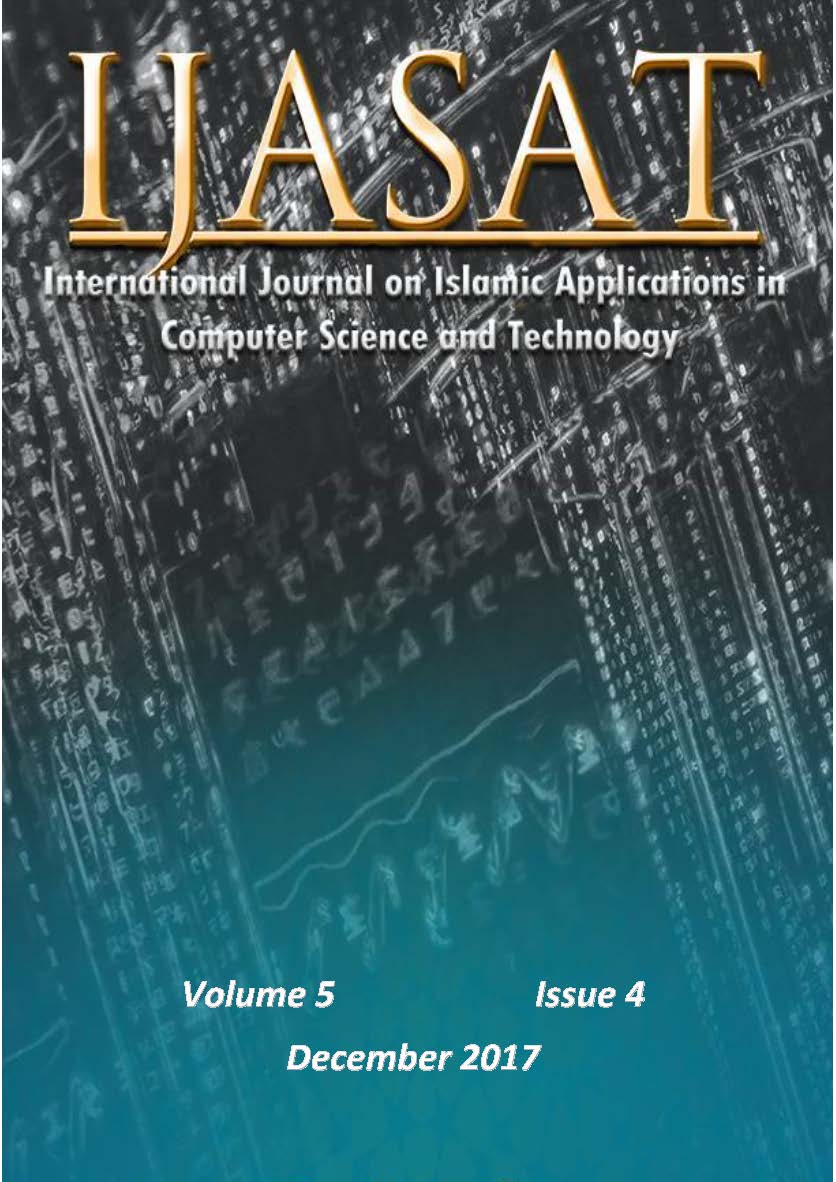Foreword
Abstract
By the grace of Allah, it is a great pleasure to introduce the issue No. 19 which is the third in the fifth volume of: The International Journal on Islamic Applications in Computer Science and Technology
The success and the welcome of this Journal by researchers from many countries, gave us great encouragement for continuing issuing in the due time. This Journal is aimed at publishing original research papers in the field of Islamic Applications in computer science and technology. This field is catching a momentum in the recent years. As a Journal interested in this field, it is the first International Journal of its specific field. As research is growing in this field, we hope that this Journal will be a platform for researchers working in the field to publish their research.
This issue contains three papers. The first one is entitled: A Hybrid Recognition System for Islamic Annotation and Historical Arabic Handwritten Manuscripts. In this paper, a multi neural-fuzzy recognition system with two combined statistical features, to solve the recognition problem of Historical Arabic Handwritten (HAH) manuscripts will be presented. The first set of statistical features are center of mass, crosshair, outlier and blank ink histogram (CCOB). The second feature is the principal component analysis (PCA). The new method will use two stages (levels) which are based on two classifiers, one public and one private, according to the similar features among characters. In the first level, a public classifier was built to deal with all character groups. Each group contains characters with overlapped features. The public classifier classifies the characters in the segmented character data set, which is captured from HAH manuscripts to specified groups. In the first stage, the system was applied to 34 Arabic characters and achieved 97.15% recognition rate for the tested dataset. In the second level, a private classifier for each group to recognize was created and classify the characters within a group which achieved 99.34% recognition rate for the tested dataset using the two level model.
The second paper is entitled: A Proposed Framework of an Intelligent Arabic Chatbot for Teaching Islamic History. The purpose of this study is to propose a framework of an intelligent Arabic-based Chatbot to teach Islamic history, which can be used to create an Arabic Chatbot like human. The study presents an application on the use of the proposed Chatbot for teaching Prophet Muhammad Life (Seerah).
The third paper is of the title: Android App for Muslim Daily Activities. In this paper, an Android application that includes many features that could serve Muslims in their daily life is presented, such as providing a Muslim with a map of all mosques around him, gives the ability for an Islamic cleric to post his lecture schedules, providing live streaming from Makkah etc.

